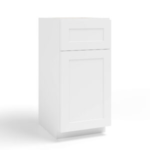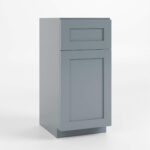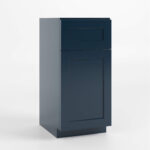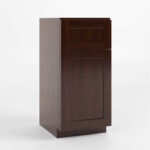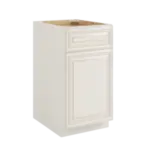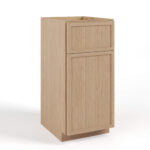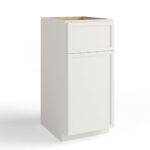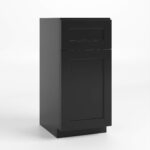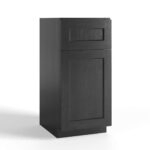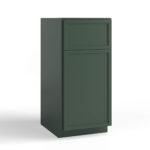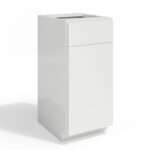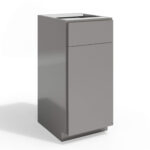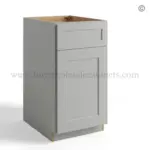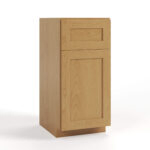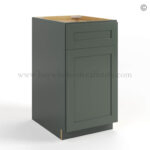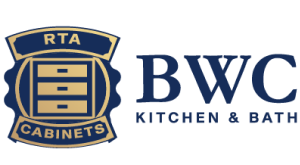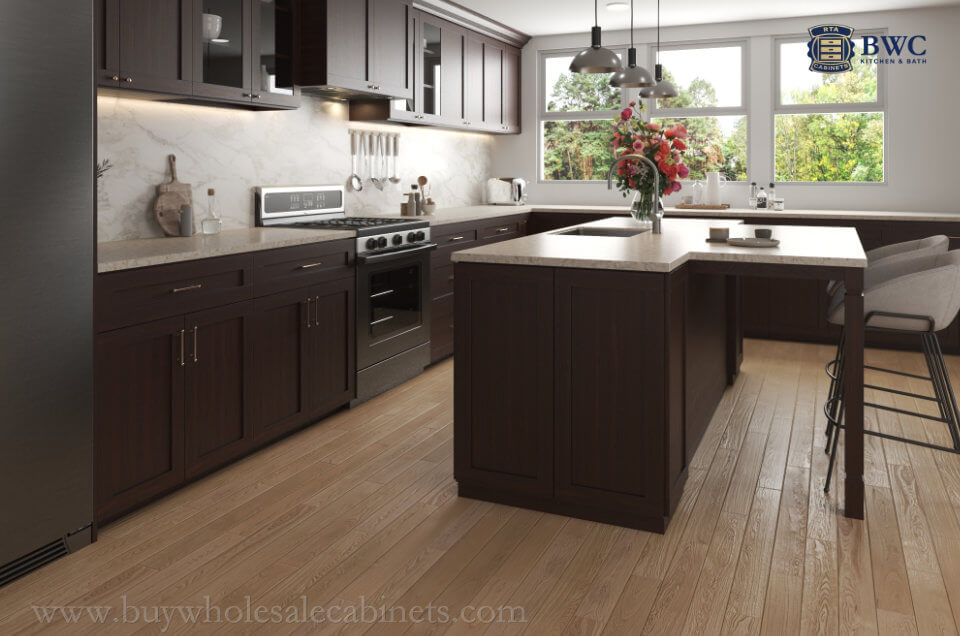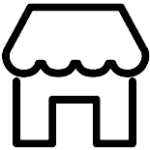Table of Contents
When you walk into a kitchen, the cabinets are one of the first things that grab your attention. They don’t just store dishes; they shape the entire look and feel of your space. That’s why so many homeowners today are choosing RTA cabinets (ready-to-assemble). They are budget-friendly, easy to install, and stylish enough to rival custom designs.
But before buying, most people ask two big questions:
- “What are RTA cabinets made of?”
- “Where are they manufactured?”
In this guide, we will break it down for you. You’ll learn about the different materials (solid wood, plywood, MDF, and more), the pros and cons of each, and where these cabinets are commonly produced (from China and Vietnam to the U.S.). We will also cover how to choose the right material for your kitchen, tips for buying, and what makes some cabinets more durable than others.
By the end, you will know exactly what to look for so you can pick RTA cabinets that match your style, budget, and daily use, without the confusion.
What are RTA Cabinets?
Before we get into materials, it helps to understand what RTA cabinets really are. These are pre-manufactured cabinets that arrive at your home in flat packs, ready to assemble. With a few basic tools, you can put them together yourself, making them perfect for DIY projects.
This DIY approach is part of what makes RTA cabinets so popular. Here’s why:
- Cost Savings
Since the cabinets arrive unassembled, you save on labor costs that usually come with fully built cabinets. Even if you hire someone to assemble them, it’s often cheaper than custom options. This makes RTA cabinets a practical choice for anyone working with a budget.
- Flexibility
RTA cabinets come in a wide variety of sizes, finishes, and styles. Whether your kitchen is tiny or spacious, modern or traditional, there is a set that will fit your layout and match your design vision. You can even mix and match finishes or cabinet door styles to create a personalized look.
- Convenience
Unlike custom cabinets, which can take weeks or even months to arrive, most RTA cabinets ship quickly. Many can be assembled over a weekend, so you can start enjoying your upgraded kitchen almost immediately without the long wait.
- Durability
Despite being flat-packed, modern RTA cabinets are surprisingly sturdy. Made of materials like solid wood, furniture-grade plywood, and density fiberboard, they can handle daily use, heavy cookware, and frequent opening and closing of cabinet doors. Quality hardware, like soft-close hinges, also helps extend their lifespan.
- Ease of Replacement or Upgrade
If one cabinet gets damaged or you want to change your kitchen’s style in the future, RTA cabinets make it simple. You can replace individual units without remodeling the entire kitchen, which is not usually possible with built-in custom cabinets.
- Eco-Friendliness
Many RTA cabinet manufacturers use responsibly sourced wood and materials, and flat-packing reduces shipping space, which lowers the carbon footprint. So, choosing these cabinets can be more sustainable than traditional fully assembled cabinetry.
The beauty of modern RTA cabinets is that they are not just functional; they can also elevate the style of your kitchen. You will find everything from sleek, minimalist lines to traditional raised-panel designs and doors with decorative veneers that make a space feel warm and inviting. And, of course, soft-close cabinet doors are becoming a standard feature, protecting your cabinet designs while adding a touch of luxury.
Whether you are doing a full kitchen remodel or just swapping out a few cabinets, RTA cabinets are versatile, practical, and surprisingly durable. They combine style, affordability, and convenience in a way that few other cabinet options can.
What are RTA Cabinets Made Of?
A common question we hear from homeowners is, “So, what exactly are these cabinets made of?” There’s no single answer. Different manufacturers use different materials, and each has its own pros and cons. Let’s take a closer look at the most common options and what makes them stand out.
Solid Wood
Let’s start with the classic choice: solid wood. If you’re looking for durability, warmth, and timeless beauty, it is hard to beat. Cabinets made from maple, oak, cherry, or birch are strong enough to last decades, resist dents, and handle frequent opening and closing of doors.
Here’s why solid wood RTA cabinets are so loved:
- Built to Last: It is incredibly durable. It can handle daily use, heavy pots, and frequent opening and closing without easily showing wear.
- Natural Beauty: Each cabinet has its own unique grain pattern, so no two pieces are exactly the same. Your kitchen instantly gets that warm, cozy, and authentic look.
- Customizable Finish: Want to change the vibe? Solid wood accepts stains, paints, and finishes beautifully so that you can refresh your kitchen anytime.
- Refinishing is Easy: Years down the line, you can sand, stain, or paint them again. They don’t just age; they evolve beautifully with your kitchen.
- Adds Value: Because of its strength and elegance, it often increases the resale value of your home. It’s a feature that buyers notice and appreciate.
These RTA cabinets tend to cost more than plywood or MDF options. But if longevity and classic aesthetics are your priorities, they’re worth the investment.
If you want high-quality RTA cabinets without paying full solid wood prices, look for options with a frame and veneered panels. This combination often gives you the best balance between durability and cost.
Furniture-Grade Plywood
Plywood is made by layering thin sheets of wood veneer and bonding them together. This gives it excellent strength, stability, and resistance to warping, especially in humid areas like kitchens.
Plywood is a favorite for mid-range RTA cabinets because it is:
- Strong and Stable: Less likely to warp, crack, or bend over time.
- Lightweight: Easier to handle, transport, and install.
- Screws Hold Better: Ideal for drawers and hinges that need to stay secure.
- Affordable Durability: Gives a solid feel without the full solid wood price.
- Perfect for Cabinet Boxes: Often used for the body, while solid wood is used for doors.
- Long-Lasting Performance: Holds up well in humid kitchens, making it practical for everyday use.
Many RTA cabinets combine plywood frames with MDF or veneer panels to keep costs reasonable while still ensuring durability. And like solid wood, plywood cabinets can accommodate soft-close cabinet doors without issues.
Veneer and Finish Options
If you love the look of real wood but want to save a little, veneers and finishes are the way to go. These are thin layers of wood or decorative material applied to plywood or MDF. They protect the cabinet and give it a stylish finish.
Finish options vary widely:
- Matte or satin paints for modern kitchens.
- High-gloss laminates for a sleek, contemporary feel.
- Wood stains that highlight the natural grain.
Some finishes are even scratch- and moisture-resistant, ensuring your kitchen looks beautiful for years. Don’t underestimate how much the finish affects the overall perception of quality. Well-finished cabinets can look high-quality even if the core is MDF.
Premium Hardware
The materials inside the cabinet are important, but so are the moving parts. High-quality RTA cabinets often include premium hinges, slides, and handles. Features like soft-close cabinet doors not only prevent damage but also make your kitchen feel luxurious.
When shopping for RTA cabinets, inspect the hardware carefully. Stainless steel or brass hinges last longer than cheaper metals, and soft-close mechanisms can dramatically improve usability and reduce noise.
Quick Comparison: RTA Cabinets Material
| Material | Pros | Cons | Best For |
| Solid Wood | Durable, timeless, refinished easily, adds value | Expensive, can expand with humidity | Premium kitchens, traditional looks, long-term durability |
| Plywood | Strong, stable, holds screws, lightweight, moisture-resistant | Pricier than MDF or particleboard | Busy kitchens, humid areas, and everyday use |
| MDF | Smooth finish, paint-friendly, affordable | Not moisture-resistant, can swell | Modern painted kitchens, low-moisture areas |
| Particleboard | Cheapest, lightweight | Weak against moisture, less durable, and can sag | Budget-friendly makeovers, low-use spaces |
| Veneers and Laminates | Stylish finishes, affordable wood-like appearance, scratch-resistant | Depends on core quality | Budget with style and modern finishes |
Where are RTA Cabinets Made?
You might be curious: “Where are RTA cabinets made?”
RTA cabinets are part of a global market, and their production spans multiple countries. Many of the RTA cabinets you see in the U.S. are manufactured overseas, particularly in:
- China: Known for large-scale production, Chinese factories make a wide variety of cabinet styles and finishes, keeping prices competitive without compromising basic quality.
- Vietnam: Vietnamese manufacturers focus on efficient production and craftsmanship, often using plywood and laminates that are both sturdy and visually appealing.
- Malaysia: Another hub for RTA cabinets, Malaysia combines tropical hardwoods and modern designs, producing options that are stylish and functional.
Due to these global factories, homeowners can access a wide range of affordable, ready-to-assemble cabinets without waiting months for custom designs.
That said, the U.S. also has its share of high-quality RTA cabinet makers. These cabinets often use solid wood, premium hardware, and superior finishing techniques. They may cost a little more, but you’re paying for precision, durability, and materials that can last decades.
Now, don’t automatically assume that overseas-made cabinets are lower quality. Many manufacturers abroad adhere to strict quality standards, use good materials, and work with experienced engineers and designers. The trick is to choose a reputable brand, read genuine customer reviews, and confirm details about materials, construction, and warranties.
In the end, whether your RTA cabinet comes from Asia or closer to home, it’s all about balancing quality, design, and budget. With the right choice, you get a cabinet that fits beautifully into your home, is easy to assemble, and offers excellent value for your money.
How to Choose the Right RTA Cabinet Material
With so many options, how do you know which cabinet materials are right for you? It comes down to three main factors: budget, moisture/usage, and aesthetics.
Consider Your Budget
Budget is often the first filter. Solid wood cabinets are like the luxury cars of the cabinet world; they are stunning, durable, and built to last decades, but they do come with a higher price tag. If you want style and function without breaking the bank, plywood, MDF, or particleboard are smart choices. Plywood is strong and long-lasting, MDF gives you endless design options, and particleboard is perfect for lighter use on a budget.
Spending a little more up front can save you from headaches later. Your budget doesn’t just decide the price; it shapes the look, feel, and durability of your entire space. So pick wisely, and you’ll get cabinets that fit your wallet and home perfectly.
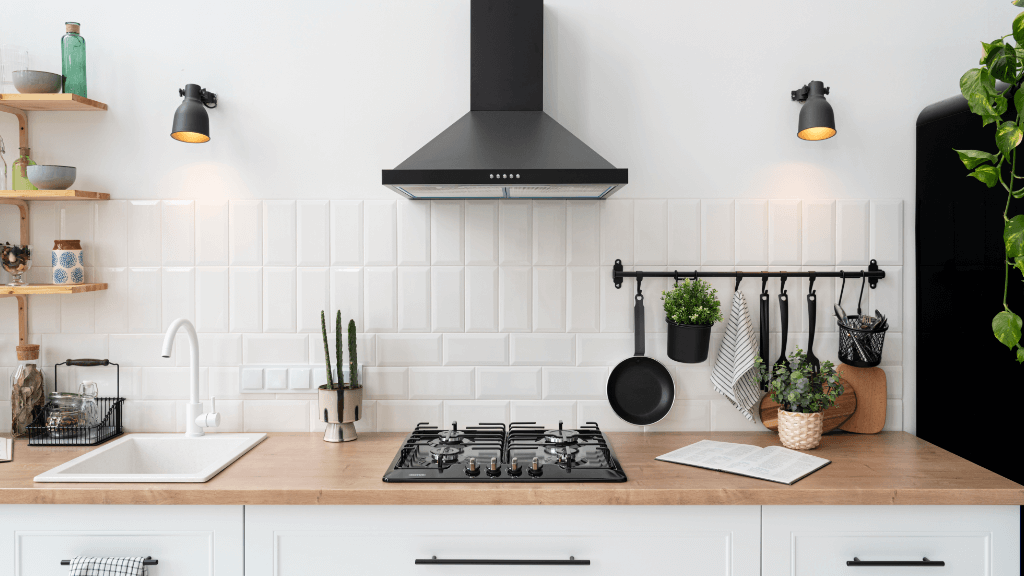
Consider Moisture and Usage
Kitchens are humid, with spills, steam, and heavy usage. Here’s how the materials stack up:
- Solid Wood: Strong and durable, works well if properly sealed against moisture. Lasts for decades with good maintenance.
- Plywood: Stable and moisture-resistant, ideal for kitchens and bathrooms. Holds screws and hardware firmly.
- MDF: Best for dry areas; avoid places with steam or water. The smooth surface makes it easy to paint.
- Particleboard: Affordable but weak against moisture; keep it for dry, low-use spaces. Can sag or swell if wet.
A kitchen sees it all: steaming pots, accidental spills, and heavy daily use. Picking materials that can handle this everyday hustle can save you from warping, sagging, or costly replacements later. If your household is busy or you cook often, investing in moisture-resistant options like plywood or solid wood means your cabinets stay strong, functional, and looking great for years.
Consider Aesthetics and Finish Options
Finally, think about style. Style matters as much as durability. Modern kitchens often use painted MDF or laminates for a sleek, clean look, while traditional designs shine with solid wood and natural stains. Veneers and laminates let you mimic high-end finishes without the cost.
Hardware can elevate the experience; soft-close doors, handles, and pulls tie the design together. Choosing the right color, texture, and finish ensures your cabinets look cohesive and inviting and reflect your personal style.
Tips for Buying RTA Cabinets
One of the biggest advantages of RTA cabinets is that you can assemble them yourself with a few basic tools. Here are some tips to make the process smooth:
Check Materials
Look closely at the cabinets’ materials, such as solid wood, plywood, MDF, or particleboard, and choose based on durability, moisture resistance, and your budget.
Consider Origin
Where the cabinets are made can affect quality, finishes, and hardware. Overseas manufacturers can be affordable, but U.S. or local brands may offer stronger materials and attention to detail.
Assess Assembly Ease
RTA cabinets should be easy to assemble. Check that the instructions are clear and that all hardware is included so you don’t get stuck halfway through your project.
Compare Prices and Reviews
Don’t just go for the cheapest option. Compare prices across brands and read customer reviews to make sure you’re getting good quality and reliable service.
Verify Warranty
A warranty protects your investment. Make sure the brand offers coverage for materials, finishes, and hardware, so you’re covered if anything goes wrong.
Conclusion
RTA cabinets offer the perfect mix of convenience, style, and affordability. By understanding what RTA cabinets are made of, whether solid wood, plywood, or MDF, you can choose the right option for your kitchen’s style and usage. Pairing these materials with soft-close cabinet doors and premium hardware ensures longevity and a touch of luxury.
Whether you’re doing a small update or a full remodel, RTA cabinets allow you to achieve your dream kitchen design without the long wait or huge price tag of custom cabinetry. And with a few basic tools, you can turn flat-pack boxes into a functional, beautiful centerpiece for your home.
FAQs
Still have questions? Let’s clear up the most common ones about RTA cabinets!
Are RTA cabinets durable for long-term use?
Yes! RTA cabinets can last for decades and can be made of materials like solid wood or furniture-grade plywood. Adding soft-close cabinet doors and quality hardware extends their lifespan even further.
What materials are best for RTA cabinets?
Solid wood and plywood are top-tier for durability, while medium-density fiberboard (MDF) is better for budget-friendly or low-moisture areas. Veneers can enhance aesthetics across all materials.
Do RTA cabinets come with warranties?
Many brands offer warranties covering hinges, slides, and finishes. Check the manufacturer’s details for coverage. Premium RTA cabinets usually include solid warranty options.
How can I identify high-quality RTA cabinets?
Look for sturdy construction, smooth finishes, and reliable materials like plywood or solid wood. Soft-close cabinet doors and quality hardware are also indicators of premium cabinetry.
Where can I buy affordable RTA cabinets?
Retailers, online stores, and specialized cabinet websites all offer RTA cabinets. Compare materials, reviews, and prices. Sometimes DIY assembly with a few basic tools gives the best value.
